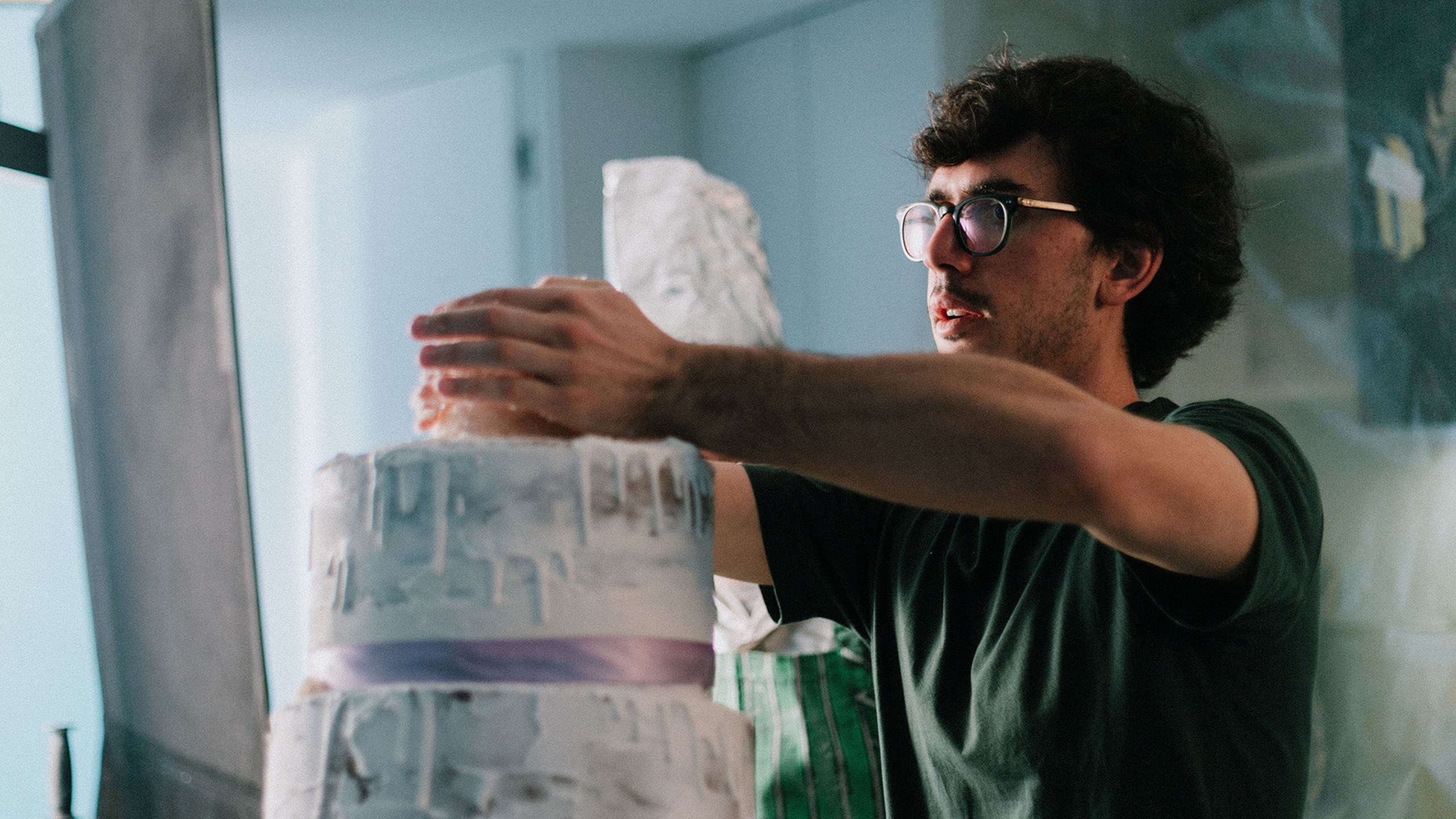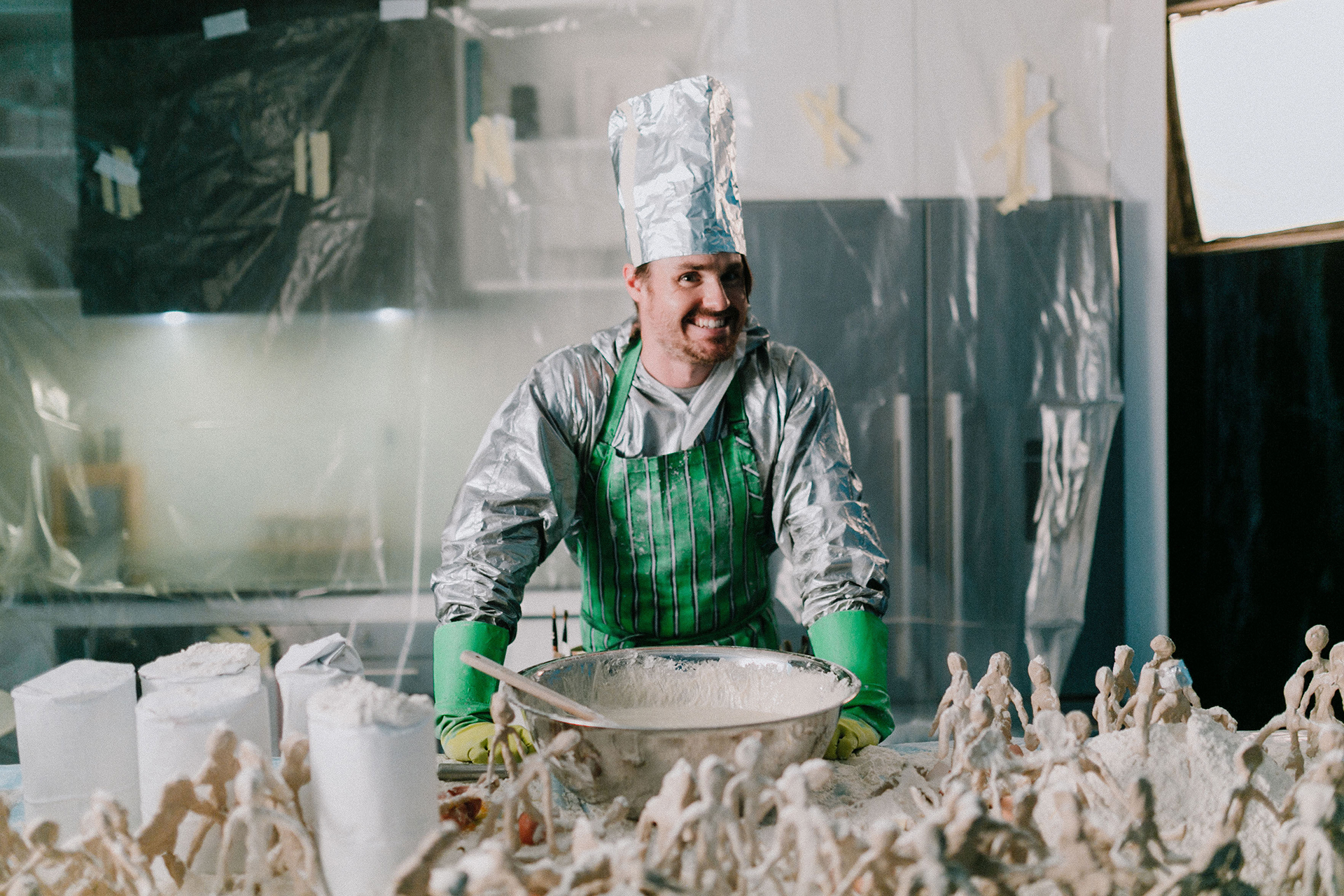WAO Ghost Spotlight with Tyler Hill
Whilst this period has restricted us physically, it has encouraged thinking ‘outside the box’ through the exciting and expanding form of digital opera. As we navigate an environment where live and digital performance coexist, we want to shine a spotlight on our creatives working in the Ghost Light to bring the magic of opera to you. Connect with your state opera company on an intimate level and glimpse the creativity, planning and efficiency required to bring a vision to life.
Join us in conversation with designer Tyler Hill as he divulges a snapshot of his process designing The Telephone, the call for experimentation with the art form of opera, and his exhilarating desire for new learning experiences.
1. Tell us about your experience designing the set, costumes and props for The Telephone – what was your process and where did you draw inspiration from?
My design process was extremely compressed due to the project’s challenging deadline. Primarily, Katt and I chose to develop the concept together for pure enjoyment and efficiency. In a snapshot our story and design process involved expressing an initial response to the music, investigating the origins of The Telephone, a 10-metre roll of butcher’s paper, multiple 2B pencils and a vigorous exchange of ideas to create a quick yet thorough storyboard. Our inspiration was drawn from the opera buffa comedy and musical interruptions expressed through Menotti’s composition. The musicality sprung connections with current makeshift arts-and-craft-ist taking over the house, fused with tensions contained within often-stark modernist plaster box. Essentially, the production design is a handmade cardboard internal shell created by Lucy to, figuratively and literally, protect her newly renovated house from man child Ben.
2. How important do you think it is to find new ways to present opera during this time and beyond?
I think this concept is overdue. “Historically” or in the past, creative reengagements and experimentation with art forms have increasingly enriched societies for the better. Mainstage opera companies, directors and boards urgently need to thrust the form forward whether they like it or not. Katt and I chose to embrace our roles as the guinea pigs and learn from the successes and mistakes we anticipated. The form of digital opera is under construction and I’m not sure it will ever be resolved, instead becoming more complex. This was directly and visually expressed through the ‘thrown-together’ construction of the protective cardboard shell and characters’ haphazard costumes. Digital opera is not purely film or live performance or a music video. It’s more of a confusing fusion of everything, which invites exciting investigation.
3. Were there any memorable moments on set you can share?
My highlight on set was working with Katt for the first time as a Director-Designer duo. This is truly an opportunity I will never forget.
4. What challenges and opportunities did this period present? What did working in the “ghost light” mean for you?
This brief job allowed me to engage with the fact that I have never designed a digital opera, a live production of The Telephone, or even heard of Gian Menotti. Adrenaline is exhilarating, though rushing decision is not ideal and stressful for the entire production and art departments. I don’t think it is sustainable to repeat such a compressed process in future. Design is a responsibility and needs time to strengthen ideas with justified meaning and planning.
5. What have you learned about yourself during this time?
I am becoming increasingly obsessed with storytelling through design. I know nothing. I still have too much to learn. This is terrifying, but now more often becoming exhilarating.
6. How will you be spending your days now that restrictions are being relaxed?
To be honest, the same as what I did when restrictions were tightened. I have always designed from home and am naturally more introvert than extrovert.
I will be protesting and educating myself about First Nations people, art, the land, plants, animals, landscape, and the flawed history of the empire’s invasion of this country.
Concurrently, I will be continuing my Master of Architecture, drawing and researching for myself, and developing concepts for future projects.
Finally, and most importantly…after +900 pages I will return Anna Kosky’s copy of Shantaram by Gregory David Roberts.
7. What excites you most about returning to the stage?
Hunting down opportunities to design with and celebrate pivotal local artists Chloe Ogilvie, Katt Osborne, Ian Michael and Zoë Atkinson.
Don’t miss The Telephone – this digital opera production will be released at 7.30pm Thursday 9 July on West Australian Opera’s YouTube Channel after which it will be available on demand.
Image by Mel Branson
ABOUT TYLER HILL
Tyler is a Designer who grew up in Paraburdoo. Recently, Tyler was the Design Associate for Perth Festival 2020. He graduated from WAAPA (BA Performing Arts, Design, 2016) and is an alumnus of BSSTC’s Resident Artist Program (2018).
Tyler’s design credits include You Know We Belong Together (BSSTC, Perth Festival & DADAA); Our Town (BSSTC & Perth Festival); Hir, The Eisteddfod, Endgame (BSSTC); Actéon, Trouble in Tahiti (Lost & Found Opera); Tom Vickers and the Extraordinary Adventure of his Missing Sock (Spare Parts Puppet Theatre & WA Museum). His awards include the David Hough Award for Outstanding Achievement in Design (WAAPA, 2016) and two PAWAs for Best Stage Design (2018 & 2019). Tyler was seconded to Elizabeth Gadsby on Sydney Theatre Company’s The Hanging and Zoë Atkinson on Perth Festival’s Opening Ceremony Home. He was Design Assistant for Boorna Waanginy: The Trees Speak and Design Associate for Museum of Water. His feature film credits include drafting for The Furnace, Dirt Music and Otherlife. Connect on the web here.


